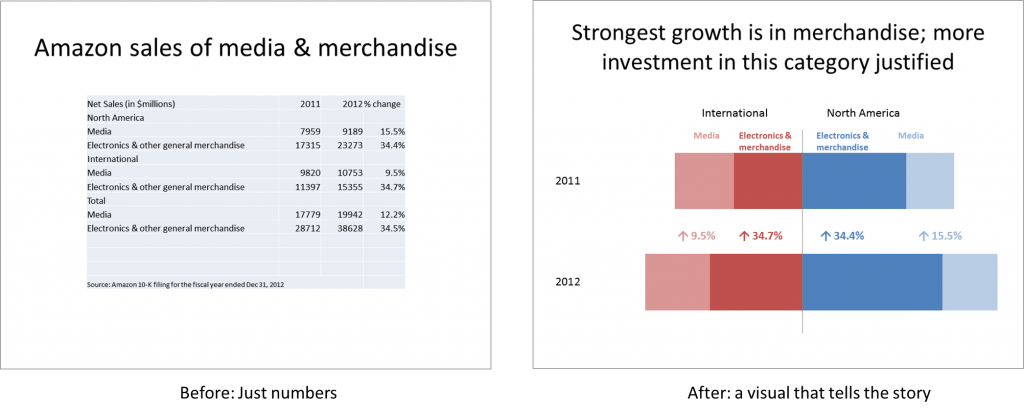April 10 workshop in Toronto on turning Excel data into visuals for executive presentations
My workshop on April 10 in downtown Toronto will show you how to overcome these roadblocks. You will see many different visuals from real presentations, and you will be hands-on in PowerPoint practicing the techniques that are used to create the visuals. The full details of all you will learn are on my website at www.MakeNumbersVisual.com.
Who should attend this workshop? Anyone who: 1) has to present financial or operational data in their presentations, 2) knows that there must be a better way than using spreadsheets on slides, and 3) is willing to learn new visuals that are more effective.





